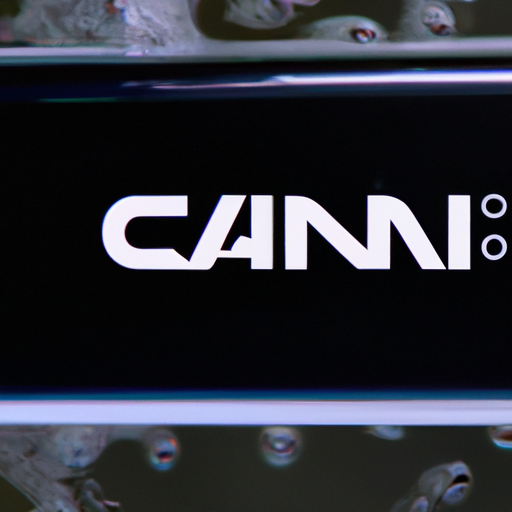Canalys Report: Apple Leads the Way in Q4 2022 Smartphone Shipments
Apple led the way in global smartphone shipments in the fourth quarter of 2022, according to a new report from Canalys.
The report found that Apple shipped a total of 79.2 million iPhones in the fourth quarter, up from the previous quarter’s total of 74.8 million. This was enough to give Apple a market share of 24.2%, up from 22.9% in the previous quarter.
Samsung was the second-largest smartphone vendor in the quarter, shipping a total of 63.7 million units, giving it a market share of 19.5%. This was down from the previous quarter’s total of 66.2 million units and 20.4% market share.
Huawei was the third-largest vendor, shipping a total of 51.9 million units, giving it a market share of 15.9%. This was down from the previous quarter’s total of 54.2 million units and 16.3% market share.
The report also found that the global smartphone market grew by 4.3% year-on-year in the fourth quarter, with total shipments reaching 327.2 million units. This was driven by strong demand in the US, China, and India.
Overall, it was a strong quarter for Apple, with the company continuing to lead the way in global smartphone shipments. With the launch of the iPhone 12 series, Apple is well-positioned to maintain its lead in the coming quarters.
Canalys: Samsung Remains the Top Earner in the Smartphone Market
Samsung has once again come out on top in the global smartphone market, according to the latest report from Canalys.
The report shows that Samsung shipped a total of 78.2 million smartphones in the first quarter of 2021, giving it a market share of 22.2%. This is a slight decrease from the same period last year, when Samsung shipped 79.2 million units and had a market share of 23.3%.
Despite this slight decrease, Samsung remains the top earner in the smartphone market. The company’s success is largely due to its wide range of devices, from budget-friendly models to flagship devices.
Apple came in second place, with a market share of 17.2%. The company shipped a total of 61.6 million iPhones in the first quarter of 2021, a slight increase from the same period last year.
Huawei came in third place, with a market share of 14.2%. The company shipped a total of 45.4 million smartphones in the first quarter of 2021, a significant decrease from the same period last year.
The report also showed that Xiaomi and Oppo rounded out the top five, with market shares of 11.2% and 8.2%, respectively.
Overall, the report shows that the global smartphone market is still dominated by Samsung, Apple, and Huawei. However, the competition is heating up, with Xiaomi and Oppo making strong gains in recent quarters.
Canalys: Huawei and Xiaomi Make Gains in the Smartphone Market

Huawei and Xiaomi have made impressive gains in the global smartphone market, according to the latest figures from Canalys.
Huawei, the world’s second-largest smartphone vendor, shipped 54.2 million units in the second quarter of 2019, up 24% year-on-year. This was driven by strong demand for its flagship P30 series, as well as its mid-range and budget devices.
Meanwhile, Xiaomi shipped 33.1 million units, up 27% year-on-year. This was driven by strong demand for its Redmi Note 7 series, as well as its mid-range and budget devices.
The two Chinese vendors have been able to capitalize on the slowing demand for Apple’s iPhones, as well as the increasing demand for affordable devices in emerging markets.
Huawei and Xiaomi’s success is a testament to their ability to offer high-quality devices at competitive prices. This has enabled them to gain market share in both mature and emerging markets, and they are now well-positioned to continue their growth in the coming quarters.
Canalys: Apple and Samsung Lead the Way in 5G Smartphone Adoption
As 5G technology continues to roll out across the world, Apple and Samsung are leading the way in 5G smartphone adoption. According to the latest figures from Canalys, Apple and Samsung accounted for more than half of all 5G smartphone shipments in the first quarter of 2021.
The figures show that Apple shipped an impressive 24.5 million 5G iPhones in the first quarter, while Samsung shipped 17.3 million 5G devices. This puts the two companies in a strong position to capitalize on the growing demand for 5G devices.
The figures also show that the Chinese market is driving the growth in 5G adoption. Huawei, Oppo, and Xiaomi all saw strong growth in 5G shipments in the first quarter, with Huawei leading the way with 11.3 million 5G devices shipped.
Overall, the figures show that 5G adoption is growing rapidly, with more than 100 million 5G devices shipped in the first quarter of 2021. This is a significant increase from the previous quarter, when just over 70 million 5G devices were shipped.
It’s clear that Apple and Samsung are leading the way in 5G adoption, and it’s likely that this trend will continue as 5G technology becomes more widely available. With more 5G devices being shipped each quarter, it’s likely that 5G adoption will continue to grow in the coming months and years.
Canalys: Android Continues to Dominate the Global Smartphone Market
Android continues to be the dominant force in the global smartphone market, according to the latest figures from Canalys.
The research firm reported that Android accounted for a whopping 85% of all smartphone shipments in the first quarter of 2021, with a total of over 300 million devices shipped. This is up from the 79% share it held in the same period last year.
The strong performance of Android was driven by a number of factors, including the continued success of Chinese vendors such as Xiaomi, Oppo, and Vivo. These companies have been able to capitalize on the growing demand for affordable devices in emerging markets, as well as the popularity of their own custom Android skins.
Meanwhile, Apple’s iOS platform saw its market share decline slightly, from 19% in the first quarter of 2020 to 15% in the same period this year. This was largely due to the fact that the company’s latest iPhones were released late in the quarter, meaning that they had less time to make an impact on the market.
It’s clear that Android is here to stay, and it looks set to remain the dominant force in the global smartphone market for the foreseeable future.
